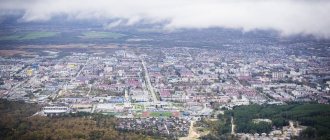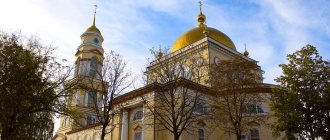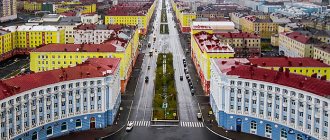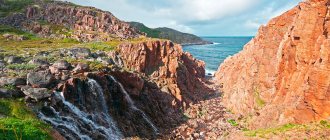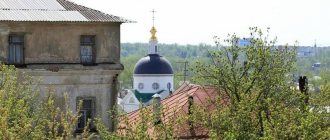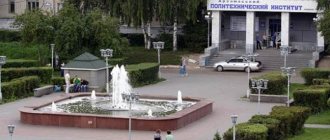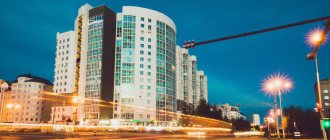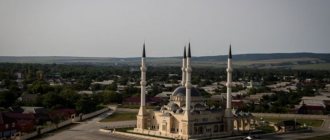It’s unlikely that anyone has heard of the large Russian island of Karafuto. In fact, everyone knows him. This is how the Japanese called the island of Sakhalin in their own way. Its capital is Yuzhno-Sakhalinsk. In the century before last, the best advertisement for the city was made by Chekhov, who toured the island and wrote a whole book about it. These places are worth seeing with your own eyes.
Yuzhno-Sakhalinsk
At the latitude of Monaco
Sakhalin is located on the eastern borders of Russia. The island is washed by two seas at once - the Sea of Okhotsk and the Sea of Japan. It is separated from the mainland by the narrow Tatar Strait. Yuzhno-Sakhalinsk is nestled at the very south of the narrow tip of the island. The city has the status of the center of the Sakhalin region. The number of inhabitants does not exceed 200 thousand people. However, in terms of population it ranks sixth among the cities of the Far East. It is separated from Moscow by 6400 kilometers! The time difference with the capital is 8 hours. The city is located in a seismic zone.
Typically, island cities serve as ports and are therefore located on the coast. In Yuzhno-Sakhalinsk, fate turned out differently. The city is located far from the sea: 50 kilometers from the west coast, 20 from the south and 25 from the east. It is framed from the east by a mountain range. Nearby stands Chekhov Peak (1045 meters) - the highest Sakhalin peak. The role of a seaport is performed by the city of Korsakov, located 40 kilometers south of the regional capital.
Fog is a frequent visitor to the island
The city is located on the banks of the Susuya River. Despite its small size - 83 kilometers - it is considered the largest waterway in the southern part of Sakhalin. Translated from the language of the Ainu - the indigenous inhabitants of the island - its name means “river overgrown with willow.” Susuya quite quickly covers the path from its source to its mouth and flows into the Sea of Okhotsk.
The location of the city determined the special microclimate of Yuzhno-Sakhalinsk. The official name for this climate is temperate monsoon. The coldest month is January, and the warmest month is August. The average temperatures in these months are, respectively, minus 12 and plus 17 degrees. Most sunny days occur in May, June and September.
High humidity makes its own adjustments - in summer it is hot and stuffy even in the shade, and in winter slightly negative temperatures cause the same sensations as in frost. The best time to visit the island is from June to September. Despite the fact that Yuzhno-Sakhalinsk is located at the latitude of Monaco, it is equated to the regions of the Far North.
No less interesting sights of Sakhalin
- Volcano Pugacheva
The mud volcano is located on the southeastern side of the island, a 2.5 hour drive from Yuzhno-Sakhalinsk. The indigenous Ainu people originally called it Maguntan.
This is a geological anomaly that consists of circles, the diameter of the largest is 4 km. Its entire surface is flat and rises 60 meters high towards the center with a mud field in the middle. At first glance, it may seem that this is not a creation of nature at all because of the ideality of the circles.
Pugachev Volcano
There is practically no vegetation near the Pugachev mud volcano; it is a clay desert in the middle of the taiga. Only rare withered plants and tree sticks are found. The volcano seethes, periodically throwing solid and liquid products to the surface.
The most famous eruption occurred in 1934, when fountains of mud reached a height of up to 50 meters and broke trees in their path. The last noticeable activity of the volcano was recorded in 2005.
The link location cannot be changed
By Russian standards, Yuzhno-Sakhalinsk is a fairly young city. It was founded in 1882 as a settlement for convicts. At that time the village was called Vladimirovka. The question arises: why were the convicts exiled so far away, if Siberia with its endless expanses was much closer to the capital? The answer is simple. It was necessary to populate the remote territories of the empire, but no one wanted to go to these regions voluntarily.
Coat of arms of Yuzhno-Sakhalinsk
In the 19th century, Sakhalin had the official status of a place of hard labor and exile. The place for the settlement was chosen for a reason - there were arable lands all around. This allowed residents to provide themselves with grain, meat and milk. The sea supplied plenty of fish. There were four settlements in total on the island, but the village of Vladimirovka grew the fastest. At that time, 130 people lived in it. Almost all of them, with the exception of children, were convicts.
At the beginning of the last century, it was already a full-fledged town with craft workshops, a post office, a small school, shops and a church. Alas, he did not remain Russian for long. In 1905, the Japanese captured the island and renamed Vladimirovka Toyoharu. The occupation continued until the end of World War II, and only in 1945 Sakhalin returned to the USSR. In 1946, the Yuzhno-Sakhalin region appeared on the map of the country. The city of Toyohara took over the capital's functions, which was immediately renamed Yuzhno-Sakhalinsk.
Food on Sakhalin
Sakhalin, like the entire Far East, is famous for its seafood. Fishing is very widespread here and people from all over the country come here for the delicacies.
What is a must-try among all the variety? Even the most fastidious gourmets will unanimously recommend that you try Kamchatka crab. If you try its claws at least once, you will want to return to Sakhalin more than once for more.
On the menus of local restaurants you can see a wide variety of crab dishes - salads, soups and juliennes. You can try everything, but the best option is to eat it in its original form and wash it down with quality white wine.
Kamchatka crab
Scallops are sold here in stores in small bags and replace seeds for local residents. This would make a great snack or even a souvenir from the Far East for relatives. Sakhalin residents have learned to cook scallops excellently; they marinate them in mustard or stew them in hot spices.
Another seafood delicacy is caviar, not fish caviar, as we are used to seeing in stores, but sea urchins. You can eat it without heat treatment, just add lemon juice or hot sauce. Gourmets advise drinking caviar with champagne or the same white wine. Those who love new experiences can try catching sea urchins in shallow water themselves.
Sea urchin roe
If you want to bring your own seafood, ask locals at the market for advice. They know all the customs rules and will help you properly pack the delicacies for transportation, you can even deliver live crab.
The proximity to Asian countries had a great influence on the traditional cuisine of Sakhalin. Korean and Japanese restaurants are widespread here, and there are many expats from neighboring countries who work in the kitchen.
In addition to the usual Russian dishes, such as borscht and Olivier, there are many unusual for residents of other regions of Russia. For example, spicy radish or fish, kimchi (cabbage snack).
Despite the fact that the concept of “spicy” differs significantly between us and Asia. If you are not a fan of pepper, immediately ask local restaurants to give you less spice. Although even in this case you will be surprised by the taste of the dishes.
Each meal is accompanied by a main course and several dozen more appetizers. This is absolutely normal for Korean and Japanese cuisine, so it's best to share the meal with friends. Or you risk not leaving the table, but rolling out because of such a rich variety.
When visiting Sakhalin, be sure to try bibimbap, cooked fern and burdock snack. You definitely won’t find such dishes in other regions of Russia, even in Moscow.
You can buy seafood delicacies not only in restaurants or markets, but also simply by driving along the coast. Many locals make money from fishing and will cook you meals as good as in a Michelin-starred restaurant.
Therefore, when driving along the coast, do not be afraid to stop and taste the dishes right by the fire. Here you can find shrimp and tasty smelt. Even winter is not a hindrance, because Sakhalin residents make a living by winter fishing.
Although you can catch and taste smelt only on lakes Tunaicha and Izmenchivoe, which we wrote about above. Just a 40-minute drive and you can try to catch fish yourself or just watch the schools that swim under the ice. It’s unlikely that your relatives will be able to bring fresh smelt, but even in dried form it is simply excellent.
You can also catch crabs during winter fishing, although only regular or king crabs. To fish for Kamchatka fish, a special license is required, which is not issued to private individuals.
Japanese heritage
Yuzhno-Sakhalinsk cannot boast of outstanding architectural masterpieces. Since it was originally built with wooden houses, severe fires often occurred. For this reason, no old buildings have been preserved in the city. The legacy of the Japanese occupation was a system of clear rectangular buildings. All streets ran either parallel or perpendicular to the railway. There was no greenery at all in the city center. Only on the outskirts did the Japanese create a small park with a pond.
Vladimirovka in the 1880s
Traditionally, the Japanese built very densely. Single-story frame shacks huddled together. They did not have yards or outbuildings. The internal plywood walls of the houses were often sliding, and the floors were earthen. The dwellings were heated by portable iron stoves, from which ceramic pipes were routed along the outer walls. Alas, typical Japanese residential buildings have not survived to this day.
Toyohara in the 1930s
This period is evidenced only by documents and photographs in the Sakhalin Regional Museum of Local Lore. It is interesting because it occupies a former Japanese building, built in the traditional “teikan-zukuri” style. This style appeared in Japan in the Middle Ages, and then became popular again at the beginning of the 20th century. There are no other buildings like this in Russia. The museum's exposition gives a complete picture not only of the history of the development of Sakhalin, but also of the flora and fauna of the island. Recently, another exhibit was a Japanese tank from the Second World War.
A new view of Yuzhno-Sakhalinsk was posted on social networks
18:58 July 21, 2020
Construction, Yuzhno-Sakhalinsk
Residents of South Sakhalin can learn about the development concepts of microdistricts 4, 7, 8 on social networks. As part of the “Your New South” project, work continues in the regional center to inform citizens about the transformation of urban space. Thus, volunteers, students of Sakhalin State University, created accounts on three social networks for each of the development concepts: VKontakte, Instagram and Odnoklassniki.
You can familiarize yourself with them and subscribe to the project you are interested in using the link in the “Social Networks” section. Thematic accounts will provide all the necessary information on the currently existing urban development concepts for microdistricts 4, 7 and 8. Let us remind you that there are five of them in total - from the Russian and international teams “UNK project”, AB “Ostozhenka”, “MADMA + Offer Dialog”, “DAK LLC + Nikken Sekkei” and MLA+.
According to the director of the internal policy department, Dmitry Khaibriev, these measures are aimed at maximizing the involvement of all residents of the three microdistricts in the discussion of these concepts. Let us note that anyone can not only look at the details of the projects, but also ask questions regarding the architectural and urban planning appearance, which will be answered by specialists.
In addition, starting tomorrow, July 22, the city administration will organize additional information meetings with the exhibition at Lyceum No. 1. Everyone is welcome in the hall of the institution from 18.00 to 19.00. At the meeting, citizens are asked to follow the rules of the current mask regime.
As part of improving the quality of feedback from citizens, picket groups also continue their work, distributing information materials at thematic cubes. A similar specially organized site operated on Ankudinova Boulevard last Friday and Saturday. On July 31, from 17.00 to 20.00, volunteers and specialists are waiting for residents of the 7th microdistrict at the Hokkaido Center.
The outdoor meeting will also take place in the 4th microdistrict. Additional information about the place and time will be published in the media.
Let us remind you that the website continues to operate for citizens where they can familiarize themselves with the concepts and send their questions to the designers.
We also add that residents of Yuzhno-Sakhalinsk can find out all the detailed information about the renovation of microdistricts 4, 7 and 8 by going to a special section of the city administration’s website, reports the press service of the mayor’s office.
News Agency Sakh.com
- 9310
- 14
- To favorites
- Send
- Error
- Share
- Link
In the footsteps of Chekhov
In 1890, Chekhov visited the convict island. The result was his book “Sakhalin Island”. An entire museum is dedicated to this book and the visit of the famous writer, which is called the Literary and Art Museum of A.P. Chekhov’s book “Sakhalin Island”. The city also has a Geological Museum, a Zoological and Botanical Park, a Bear Museum and a regional Art Museum.
Nishiichijo-doori Street in Toyohara (now Lenin Street)
There are many interesting places in the immediate vicinity of Yuzhno-Sakhalinsk. The climb to Chekhov Peak, which is located not far from the city, is very popular. Since the peak is only one kilometer high, the ascent can hardly be called conquest. Rather, it is a walk through picturesque places along a marked path, along which not only rosemary, blueberries, lingonberries and rowan grow, but even bamboo!
Railway Bureau Karafuto
The Japanese considered the mountain sacred, so they built a small temple on the top, dedicating it to the sun goddess Amaterasu. It has survived to this day. A stunning panorama opens up from the top. They say that in good weather you can actually see the Japanese island of Hokkaido. The trail is especially picturesque in autumn, when the color palette is complemented by gold and crimson.
Outdoors
People also come to Yuzhno-Sakhalinsk to improve their health. The most famous health resort is the Sinegorsk Mineral Waters sanatorium. Healing water was discovered in these places at the beginning of the 20th century. Local residents were surprised by the water in the Sinegorka River, which had a characteristic sour taste. The first hospital was built here by the Japanese. Leaving the island, they disguised and concreted the source. It was only possible to rediscover it in the 60s.
The city has a Geological Museum
The peculiarity of the local water is that it has a high arsenic content. Don't be scared! In small doses this element is useful. It’s not for nothing that ancient healers said: “Everything is poison and everything is medicine. It's just a matter of quantity." Arsenic mineral waters are extremely rare in nature. In Yuzhno-Sakhalinsk, this natural medicine is used to treat diseases of the joints and lungs, as well as nervous disorders. An additional option to Sinegorsk mineral water can be the healing mud in the village of Goryachiye Klyuchi.
In order not to lead to illnesses, it is better to engage in their prevention. The sports and resort complex “Mountain Air” provides excellent opportunities for this. It is located just three kilometers from Yuzhno-Sakhalinsk. In winter, there are nine slopes, to which skiers are transported by a gondola-chair lift.
In the immediate vicinity of Yuzhno-Sakhalinsk there are many remarkable rocks
In summer it is worth taking a walk to the Yuzhno-Sakhalinsky mud volcano. It is located just two dozen kilometers northwest of the city. The best period to visit is from May to October. By jeep you can get almost to the volcano. The walk from the Novaya Derevnya railway station to the crater takes about two hours. The area of the mud field is six hectares. This is the largest mud volcano in Russia!
You can go skiing in Yuzhno-Sakhalinsk
It is also worth visiting the picturesque outlier “Frog”. It got its name from its characteristic shape, reminiscent of a sitting frog, ready to jump. An unusual natural formation is located near the village of Vestochka, two dozen kilometers from Yuzhno-Sakhalinsk. In addition to the rock, there is a river with a beautiful waterfall in which you can swim. Since the “Frog” is considered a “place of power,” the village even has an esoteric museum.
Mud volcano
A number of excursions have been developed for tourists coming to Yuzhno-Sakhalinsk. For example, there is an hour and a half trip by motor boat to a sea lion rookery in the Sea of Japan near the city of Nevelsk. There is an excursion to the cascade of Salyut waterfalls. Two waterfalls, 12 and 3 meters high, bubble near the former village of Svetlyaki. In the most picturesque place of the Nevelsky district there is a “Scandinavian trail” three kilometers long.
In the port of Korsakov, tourists are invited to get acquainted with the monastery, climb the Mountain of Tears, look at the monument to the First Hydrographers, and also take spectacular pictures from the observation deck. There is a walking route called “Cape Ostry”. It starts in the city of Dolinsk, passes through the cape, winds along the banks of small rivers and ends in the village of Lesnoye. In these places it is quite possible to meet a bear.
Tourists are offered an excursion to the sea lion rookery
Few people know that Sakhalin offers such a service as diving. Dive sites are located near small islands in the Sea of Japan. In particular, they are located 90 kilometers east of Yuzhno-Sakhalinsk near the village of Prigorodnoye and the city of Nevelsk. They offer diving in the company of sea lions. And near Moneron Island, thanks to the Tsushima Current, you can even admire the tropical underwater fauna.
The beauty of Sakhalin
And it’s really hard to believe (after all, it’s a region of the Far North!) that there is beach tourism on Sakhalin. Nevertheless, it is true. There are several places for recreation in the vicinity of Yuzhno-Sakhalinsk. The most famous are Aniva Beach and the beach in the village of Prigorodny on the shore of Aniva Bay. There are also beaches in Yablochny on the Sea of Japan and in the village of Okhotsk on the Sea of Okhotsk. There are about 40 hotels in Yuzhno-Sakhalinsk. It is impossible to stay here without a roof over your head.
Photos of Yuzhno-Sakhalinsk
Yuzhno-Sakhalinsk: Photos Weather Map Flights Hotels
Countries of the worldRussiaCitiesYuzhno-Sakhalinsk
1
This collection contains 104 photographs of Yuzhno-Sakhalinsk, its views, houses and attractions, which were taken by local residents, tourists and photographers. All photos of Russian cities and attractions are presented in high quality, we hope that this will help you get to know them better.
VKontakte facebook twitter
Photos of other Russian cities Photos of Moscow Photos of St. Petersburg Photos of Sochi Photos of Tula Photos of Yaroslavl Photos of Vladimir Photos of Voronezh Photos of Yekaterinburg Photos of Ryazan Photos of Tver Photos of Sevastopol Photos of Dmitrov Photos of Rostov the Great Photos of Ivanovo Photos of Orel Photos of Nakhodka Photos of Belgorod Photos of Bryansk Photos of Volgograd Photos of Kazan Photos of Kaluga Photos Krasnodar Photo Lipetsk Photo Nizhny Novgorod Photo Penza Photo Samara Photo Saratov Photo Smolensk Photo Tambov Photo Chelyabinsk Photo Anapa Photo Kolomna Photo Yuzhno-Sakhalinsk Photo Vladivostok Photo Grozny Photo Izhevsk Photo Kostroma Photo Kursk Photo Omsk Photo Perm Photo Rostov-on-Don Photo Ufa Photo Cheboksary Photo Chita Photo Kerch Photo Pushkin Photo Sergiev Posad Photo Murom Photo Yeisk Photo Abakan Photo Saransk Photo Dolgoprudny Photo Balashikha Photo Irkutsk Photo Kirov Photo Novosibirsk Photo Orenburg Photo Podolsk Photo Ulyanovsk Photo Essentuki Photo Magadan Photo Alushta Photo Mytishchi Photo Krasnoyarsk Photo Togliatti Photo Khabarovsk Photo Myshkin Photo Kaliningrad Photo Rybinsk Photo Stavropol Photo Suzdal Photo Tomsk Photo Tyumen Photo Pyatigorsk Photo Ukhta Photo Astrakhan Photo Blagoveshchensk Photo Murmansk Photo Novorossiysk Photo Pskov Photo Ulan-Ude Photo Gelendzhik Photo Uglich Photo Pitkyaranta Photo Arkhangelsk Photo Barnaul Photo Vologda Photo Yoshkar-Ola Photo Kemerovo Photo Kurgan Photo Magnitogorsk Photo Nalchik Photo Surgut Photo Taganrog Photo Yakutsk Photo Simferopol Photo Balakovo Photo Svetlogorsk Photo Ordzhonikidze Photo Zheleznovodsk Photo Engels Photo Komsomolsk-on-Amur Photo Armavir Photo Vladikavkaz Photo Makhachkala Photo Norilsk Photo Tuapse Photo Yalta Photo Torzhok Photo Ples Photo Alexandrov Photo Volgodonsk Photo Angarsk Photo Bratsk Photo Naberezhnye Chelny Photo Novokuznetsk Photo Syzran Photo Cherepovets Photo Sudak Photo Veliky Novgorod Photo Kislovodsk Photo Kalyazin Photo Mineralnye Vody Photo Kovrov Photo Belokurikha Photo Pereslavl-Zalessky Photo Sortavala Photo Derbent Photo Petrozavodsk Photo Syktyvkar Photo Feodosia Photo Novocherkassk Photo Vyborg Photo Kozelsk Photo Elista Photo Balaklava Photo Foros Photo Nizhnevartovsk Photo Petropavlovsk-Kamchatsky Photo Pechora Photo Salekhard Photo Tobolsk Photo Valdai Photo Yuryev-Polsky Photo Nizhny Tagil Photo Severodvinsk Photo Anadyr Photo Zadonsk Photo Khanty-Mansiysk Photo Priozersk Photo Vorkuta Photo Temryuk Photo Dzerzhinsk Photo Gatchina Photo Kronstadt Photo Yelabuga Photo Veliky Ustyug Photo Maykop Photo Staraya Russa Photo Miass Photo Khasavyurt Photo Shlisselburg Photo Alupka Photo Bakhchisarai Photo Peterhof Photo Palekh Photo Velikiye Luki Photo Baltiysk Photo Igarka Photo Nevyansk Photo Nerekhta Photo Kidekshi Photo Verkhoturye Photo Shchelkino Photo Dalmatovo Photo Ostashkov Photo Chernyakhovsk Photo Gorokhovets Photo Ussuriysk Photo Sterlitam aka Photo of Zelenogradsk Photo of Neman Photo of Sovetsk Photo of Polessk Photo of Severomorsk Photo of Roslavl
Yuzhno-Sakhalinsk
Description Photos Weather Map Flights Hotels
See also: Photos of Madrid, Sights of Russia, Cities of Uzbekistan, Slovenia, Niteroi, Granada, Capitol in Washington, Masada Fortress
How to get there
Currently, tourists mainly travel to Yuzhno-Sakhalinsk by air. The number of flights and the list of airports from which flights operate depend on the season. There are flights from Yekaterinburg, Novosibirsk, Khabarovsk, Vladivostok. Planes from Moscow fly to Sakhalin all year round. Travel time is about 8 hours. In winter, the airport on the island may be closed for some time due to weather conditions. Since the airport is located within the city, the easiest way to get to the center is by taxi.
Less commonly used is the ferry option from Vanino (Khabarovsk Territory) to Kholmsk (Sakhalin). In this case, the journey takes about 14 hours. You can buy a ticket without a cabin (seated seats) or take a place in a one-, two-, or eight-berth cabin. There are trains from Khabarovsk to the port of Vanino (the journey takes 25 hours). Buses run from the port of Kholmsk to Yuzhno-Sakhalinsk (93 km). Since the number of seats on the ferry is limited, tickets should be purchased in advance. This is especially true in the summer.
